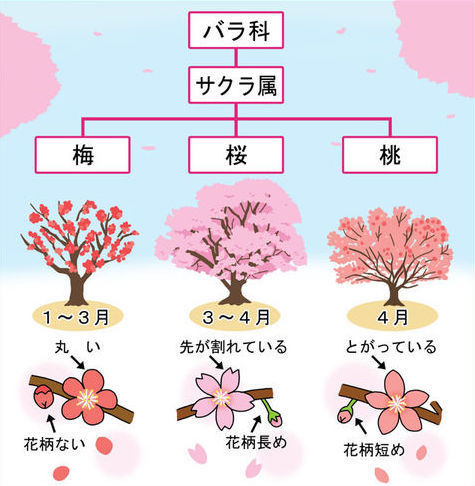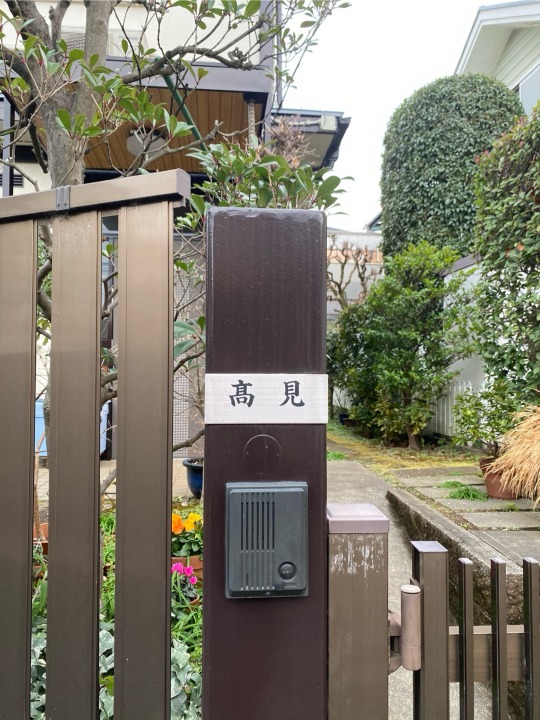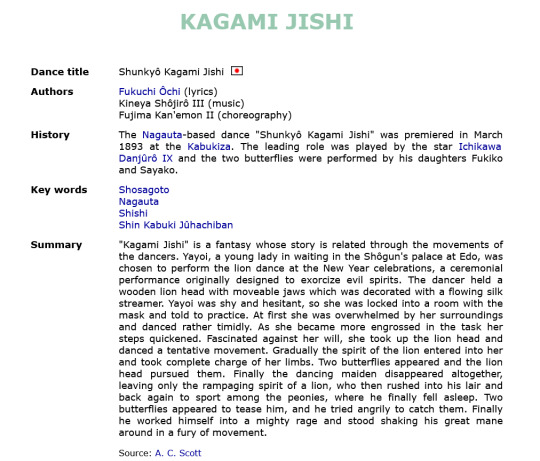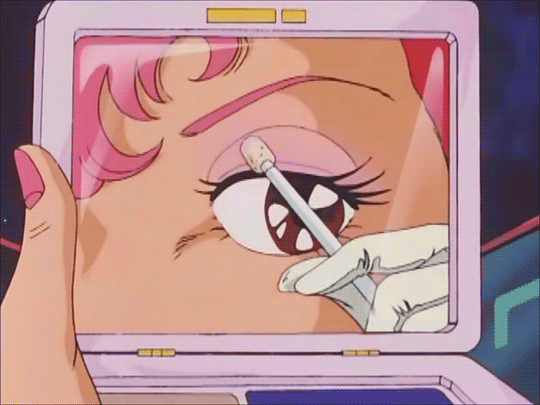Text
火火火火火火火火火火火火火火火火
火炎炎炎炎炎炎炎炎炎炎炎炎炎炎火
火炎焱焱焱焱焱焱焱焱焱焱焱焱炎火
火炎焱燚燚燚燚燚燚燚燚燚燚焱炎火
火炎焱燚 this 燚焱炎火
火炎焱燚 is 燚焱炎火
火炎焱燚 fine 🐶 燚焱炎火
火炎焱燚燚燚燚燚燚燚燚燚燚焱炎火
火炎焱焱焱焱焱焱焱焱焱焱焱焱炎火
火炎炎炎炎炎炎炎炎炎炎炎炎炎炎火
火火火火火火火火火火火火火火火火
80 notes
·
View notes
Text
I just finished reading a very fun book called 人生で大切なことは泥酔に学んだ (The important things in life I learned by getting wasted) by 栗下直也. It's a collection of essays about a bunch of 偉人 who also happened to love drinking in abundance. The author's style is really fun and humorous and the book itself features a lot of people that were of interest to me (writers). Some of the trivia about them was really hilarious but also quite shocking.
It's only April and I have already read about 10 books in Japanese this year. The pile is still huge though...
#japanese#reading in japanese#studyblr#langblr#language#language learning#language studying#japanese studyblr#study japanese#japanese language#literature
12 notes
·
View notes
Text
How to Improve Your Handwriting in Japanese
Learning to write in Japanese, teaching others to learn to write in Japanese, and watching Japanese people write in Japanese has taught me that it’s hard to write in Japanese. Remembering how to write the kanji in the first place is hard (especially with the ease of writing in Japanese on the computer or phone), remembering the stroke order and then figuring out how to fit the character into the space that you have - these are all difficult. And then on top of that, you don’t want these beautiful characters to look like you were bouncing up and down on a dirt road while you wrote them.
Handwriting in any language varies by person. There are people whose handwriting is sloppy in Japanese, just as in any other language. My handwriting in English isn’t perfect either, but I want my kanji to look less like shaky squiggles and more like, well, a native Japanese speaker’s characters. So I decided to break down how I go about improving my Japanese handwriting.

Keep reading
#japanese#cool stuff. I almost don't handwrite anymore at all in any language lol#but I have some 原稿用紙 that i want to eventually utilise so maybe it's time to spice up my handwriting huh.
130 notes
·
View notes
Text



top 3 things anyone has ever said
#japanese#dazai osamu#literature#studyblr#langblr#polyglot#japanese studyblr#study japanese#japanese language#language studying#language study#language learning#language#quotes from literature: nah#unhinged quotes from the man himself: 👌
11 notes
·
View notes
Text
桜梅桃李 (o-bai-to-ri) “never compare yourself to others”

This yo-ji-juku-go (Japanese 4-character idiom) is comprised of 4 beloved Japanese trees. They are:
桜 = cherry (sakura)
梅 = apricot (ume)
桃 = peach (momo)
李 = plum (sumomo)
Each of these iconic trees blossoms in its own time and in its own unique way.
桜 (sakura) are of course the cherry blossom trees famous for blooming spectacularly and incredibly briefly once a year, usually in April. Sakura trees in full bloom is an annual event, and people go to their local park to see them, take photos, and have picnics underneath them. It's such a big deal that it's reported on the weather forecast, with reporters commenting on how quickly the "sakura front" is moving northwards across the country.
梅 (ume) is the "ume" in umeshu! This is a sweet liqueur which is made from soaking ume in sake. It tastes amazing, and is one of the things I miss most about Japan. Japanese learners will no doubt recognise "ume" as usually being translated as "plum", however it is technically closer to the Western apricot.
桃 (momo) is one of the best-loved fruits in Japan. There is even a fairy story called "Momo-taro" about a little boy who comes from inside a peach. He grows up to be a great hero, of course, and saves everyone from a demon. "Momo" is also a fairly common girls' name.
李 (sumomo) are known as "Japanese plums" or "Asian plums". The trees are famous for their delicate white flowers. They usually bloom just before the sakura. Whilst not as famous or as showy as sakura, they are well-loved for their elegance, and for being a sign of spring.
This one-off calligraphy artwork is available on my Etsy shop here:
97 notes
·
View notes
Text
After Showa period literature has blown a hole in my reading confidence (it's challenging!), going back to contemporary easy reads is very uplifting 😂
#i absolutely love showa literature. it just requires a lot more effort and time#but when you dig through it feels very rewarding#right now though I need a break from difficult books!#japanese#literature#polyglot#langblr#studyblr#language learning#language studying#japanese studyblr#japanese language#reading in japanese
11 notes
·
View notes
Text
「○○するも ~だった」 = "even if I did ○○, I couldn't ~"
= 「○○したけど できなかった」
アタックを繰り出すも、決定打にならなかった。Even if he repeatedly attacked, he couldn't land a decisive blow.
#japanese#grammar#polyglot#japanese studyblr#study japanese#studyblr#langauge#langblr#language studying#language study#language learning#japanese language
22 notes
·
View notes
Text
Banned hiragana from Japanese license plates and why
Most Japanese license plates have a hiragana on them, but some are banned
お (o) - looks similar to あ (a)
を(wo) - pronounced the same way as お(o)
し(shi) - the character for death (死) is also pronounced shi
へ(he) - there is another character pronounced the same way (屁) and it means fart
ん (n) - cause it is hard to pronounce on its own
181 notes
·
View notes
Photo

「梅・桜・桃」の違い、わかりますか?
どれもバラ目バラ科サクラ属の植物なので、似ているのも当然です。種類によっては例外もありますが、見分けるポイントは花の付き方と花びらの形、そして咲く時期で��。
__
Differences between:
Ume / 梅 / plum blossom
Sakura / 桜 / cherry blossom
Momo / 桃 / peach blossom
These Rosaceae family of flowers are all culturally cherished throughout history of Japan, symbolising the beginning of new year and spring. Yet they are often confused!
Here are some tips: plum blossoms as early as January with round petals; cherry blossoms March to April and have a small split at the end of each petal; peach blossoms in April and have pointy petals.
4K notes
·
View notes
Text

Lovely garden—it will never not be wild to me that there can be this much color in Tokyo in the winter..... Anyway! The name 髙見 or 高見 is read Takami. There are only about 130 people with this name using the archaic 髙, but over 32,000 using高!
髙 or 高 is read たか, だか, or コウ. It means high/tall, expensive, raise/lift, or enhance.
見 is read み or ケン. Radical-wise, it's an eye 目 on 儿 legs, and it means to see, to be visible, or to show. It can also mean idea/opinion, hopes, or chances.
#japanese#coincidentally (or not) i just received a package of books by 高見順 who is a brilliant brilliant 20-century writer :)
36 notes
·
View notes
Text
The morbid origins of the names of the doll Shadows

In Persona 4, you encounter 5 doll-looking Shadows based on a doll keychain design seen on a bag in Persona 3.
Earnest Calocy (JP: Majime Karoshii)
Dry Dexy (JP: Dorai Dekishii)
Emaciated Garcy (JP: Garugaru Gaashii)
Protective Lexy (JP: Omamori Rekishii)
Successful Junecy (JP: Shusse Junshii)
You might notice all of these names have "shi" in them, which can mean "death". Indeed, these are all references of different ways to die. Rest under the read more just in case. CW for various mentions of death.
Origins:
Calocy's name, Karoshii, comes from 過労死 (karoushi), which means "death by overwork".
Dexy's name, Dekishii, comes from 溺死 (dekishi), meaning "death by drowning".
Garcy's name, Gaashii, comes from 餓死 (gashi), meaning "death by starvation".
Lexy's name, Rekishii, comes from 轢死 (rekishi), meaning "death by being run over / death by hit and run".
Junecy's name, Junshii, comes from 殉死 (junshi), meaning "death by committing suicide to follow your master into the afterlife".
I assume their first names are meant to be related in someway. Like Dry Dexy would then be Dry (Death by) Drowning, and Emaciated Garcy would be Emaciated (Death by) Starving, etc.
Atlus came up with this theme because, as game developers, they wanted to include "death by overworking" (Calocy's name) somehow. I'm guessing this affected their designs as well. Calocy is wearing a little suit and glasses, for example.
17 notes
·
View notes
Text
The Hunt for Priceless Tears
What would you do if you tried to find something that is basically non-existent on the internet? What if you have searched the depths of the internet, wading through the old Geocities sites and Japan's National Diet Library's archive for a specific piece of work? When nothing came to fruition, would you lay down and say "There is nothing else that I can do."?
Many might've just stopped there and called it a day but, where there is a will, there is a way.
Context: Why I Started Looking
As an admin of the Bungō Stray Dogs Wiki, I try to make sure that all of our pages are up to standards. The pages for the Abilities for the series are there to give readers a better picture of what the characters can do and most importantly for myself, the origin of the work and how it represents the character in the series.
The Hunting Dogs were introduced in Chapter 60 of the manga introducing some rather obscure writers from Japan (in the western world at least) to a lot of new people. The four of them were:
Fukuchi Ōchi (福地桜痴, 1841 - 1906) an important figure who created Japan's first daily newspaper.
Suehiro Tetchō (末広鉄腸, 1849 - 1896) a politician who wrote political novels.
Ōkura Teruko (大倉燁子, 1886 - 1960) a detective novelist from the Shōwa era.
Jōno Saigiku (条野採菊, 1832 - 1902) a journalist who worked with Fukuchi with his newspaper.
The last figure was particularly interesting as his ability page was the only one with a severe lack of any information on their original work.

What can be clearly seen is a massive difference in the content for the three authors in comparison to Jōno. Perhaps this is because he was more known as a journalist rather than a writer for kabuki plays. Other than that, the other works exist on the online space under many different forms of media.
Mirror Lion was already a famous kabuki play with the script and summaries of the play online, the performance of the play was also on YouTube.
Gasp of the Soul's text has been uploaded to Aozora Bunko.
Plum Blossoms in Snow has an entire Wikipedia article along with a scan of the book being on Japan's National Diet Library.
Priceless Tears however, had nothing other than the information listed on Jōno's Wikipedia page.
For the sake of making the pages equal, I decided to look up any information on the plot for Priceless Tears so the pages follow to the Wiki's standards.
The Search Begins
A.K.A. How I Stopped Worrying and Learned to Love the Search
So I started looking first in kabuki21.com where the people can find summaries and information on many other kabuki plays.

This was where the wiki sourced its description for Fukuchi's Mirror Lion. As you can see the information about the play is quite thorough so it was my number one hope in finding something related to the play but alas, nothing regarding the play Priceless Tears or even anything on the author. My first reaction is just "Fine, it might be a pretty obscure play. Maybe it'd be on the Japanese internet."
Boy was I wrong.
Looking through the Japanese internet was equally arduous, looking up the name only lead to people asking about the ability from the series and wondering what it can do. Looking it up with the name of the writer did not help either, wading through the many articles there wasn't much. However, there was a slight salvation to the bad streak.

An fc2 blog page with some information on Meiji-era figures. The page listed the date that Priceless Tears was published. Meiji 22 (1889) in November. But this feels like it's not quote there yet in terms of enough information for what to look up.
I then decided to look up issues of the magazine it was published in, Kabuki Shinpō, specifically in the National Diet Library where many old books are are archived and digitized. However this did not yield any meaningful results since the edition that had Priceless Tears was not digitized yet.
Breakthrough
After clawing through websites, I somehow encountered an entry in the Kyushu University Library which immediately caught my eye. Not because it had a lot of interesting information but, because my friend goes to that university. Immediately I contacted him on Discord to check his university's library. A few days later we hopped on a call to talk about what I needed in particular for this.

This entire discovery was a complete coincidence, while my friend has mentioned the university library and hell we screwed around in Google Maps to see the thing but, really the thought has never crossed my mind that they would store Meiji-era books. This entire discovery kept me up at night and I could not handle what the future might bring at this point. It felt rather surprising to say the least because as far as I have seen, there are no digital copies of Priceless Tears, let alone the synopsis of the play.
A few days after the discussion, my friend hit me up and we decided to call through Discord to find the book. The first obstacle was unexpected however, it was the signal inside the library which is atrocious to put it lightly. At this point however, I was determined to get something out of this trip. At first we couldn't find the book at all until my friend found it in the shelves. Unfortunately, there were several volumes and not only that, these books were the original Meiji-era copy so they were fragile.
We then decided to talk to one of the librarians who gladly helped locate the book, after some amount of broken Japanese, we got through and we found the exact page where the story was located.

It felt like looking through a treasure trove but we came here for exactly one thing and that's when it was a little bit late when I realized that my friend had only took the picture of the synopsis. The other pages are those of other plays from the same edition of Kabuki Shinpō. Due to the book being fragile, we decided that it's better to leave things this way rather than risk the book being further damaged but, at the very least we had the synopsis which was better than zero.

At last, we have the synopsis. Again I forgot something very important at this stage and that is to look for a translator. A translator who understands the Kyūjitai kanji which was used during the Meiji-era. During this time I spent the time transcribing the text to preserve what we have at the very least. This was how it went for the next few months, the synopsis still in the back of my head and I couldn't do much about it.
A Little Help From My Friends
The Light Piercing Through the Shadows
Someone had pinged me on the Bungō Stray Dogs Wiki Discord that they were able to do translations, immediately the first thing I had in mind was to pull out the script for Priceless Tears. They were very kind and was very much happy to help which was a massive relief. After almost a solid year, we finally have a picture of what's going on.

It honestly still feels unreal and I am greatly shortening this entire search. I hope that one day the full script will be transcribed online so that it's easier to understand the greater picture.
Conclusion and thoughts
This entire search just made me feel so many emotions, I honestly am proud of the efforts and lengths my friends went through to help out with this silly little picture. At the same time this project reminded me about how important it is to archive archaic documents for future reference. Even if it's just something done for a manga series, I am still very happy that some glint of information exists now on the web about this play.
I really do hope this specific issue of the magazine will be uploaded to the NDL for easier viewing, if that ever happens then I'll be glad to update things on that front.
Special Thank You to
My friend Kevinoshita who helped track down the book to Kyushu University's library.
Other members of the SampleText Discord group.
Members of the Bungō Stray Dogs Wiki Discord.
Members of the Bungō to Alchemist Discord.
Pengumi from the Bungō to Alchemist Discord who helped with the transcription.
れぃ from the Bungō Stray Dogs Wiki Discord who helped with the final translation.
105 notes
·
View notes
Text
「準備」と「用意」と「支度」の違いは?

these three words, 準備 (じゅんび), 用意 (ようい), and 支度 (したく), are all defined as "preparations" or somehow "getting ready," but they each have their own nuance. if you're interested in the (native japanese) source for this info, see the end of the post!
準備: the broadest
「準備」は、「用意」「支度」に比べて広い範囲で使えるため、迷った場合には「準備」を使うと考えて良いでしょう。具体的なものをそろえるほか、企画や計画をすることも対象に含みます。
the word 準備 is very common. you've probably heard it in phrases like 「準備いい?」, meaning "are you ready?" you can use 準備 pretty much anytime you're not sure which word to pick, since it can be used for physical as well as mental and emotional preparations.
旅行の準備で忙しい。 = i'm busy getting ready for my trip.
スピーチの準備を注意深くした。 = i prepared my speech carefully.
心の準備をしなさい! = steel yourself!
用意: halfway in between
「用意」は、「準備」よりも狭い使用範囲で、具体的な対象がある場合に使われることが多いです。そのため「準備」とは異なり、具体的な対象がない、「計画を用意」「心の用意」とは一般的に言いません。
unlike 準備, the word 用意 is usually used for physical, material preparations, rather than mental preparations or plans.
出発の用意をしてください。 = please prepare for departure.
パーティーの用意はいい? = is everything ready for the party?
お風呂の用意ができた。 = the bath is ready.
支度: the most specific
「支度」は、主に衣服や食事、荷物に対して使用され、より限定的な表現として使われます。「準備」「用意」よりも、必要なものを揃えてから物事を実行するまでの時間が短いことが特徴です。
lastly, 支度 is like a more specific version of 用意 in that 支度 usually refers to preparations involving food, clothes, luggage, etc. this word has the nuance that the window for preparation is very slim: as soon as the necessary things are assembled, their intended usage will soon or immediately be carried out.
夕食の支度ができた。 = dinner is ready.
子どもたちに散歩の支度をさせた。 = i got the children ready for their walk.
すぐに旅行の支度をしなさい。 = get ready for the trip at once.
so there you have it! when in doubt, use 準備, and remember that 用意 and 支度 refer to physical preparations with varying specificity. feel free to send me an ask if you have any questions :) お疲れ様です!
source: blognihongo
144 notes
·
View notes
Text
If you want to enjoy the autumn leaves in Kyoto, you should take this train.
#that's cool!#when I was in tokyo no such feats happened but I encountered a train plastered in Jojo anniversary posters lmao
4K notes
·
View notes
Text
Katakana quiz: ヒエラルキー
Can you figure out what this word is in English?
Answer below:
-
-
-
-
It's "hierarchy"!
#japanese#this is a german loanword so it is not your typical english pronunciation#same goes for many science and medicine related words like エネルギー アレルギー ガーゼ カルテ and a ton of others...
25 notes
·
View notes
Text
If you study ANY foreign languages and post about your study logs/journey frequently, please interact with this post because I'd love to follow more langblrs!
177 notes
·
View notes
Text
2023 summary
Another year, another obligatory summary post. I feel like posting a little early because I'm already in a sleep mode before New Year's...
2023 is a year where I did so many things! So many lifelong dreams finally fulfiled. These dreams were both language related and not, and I'd sit here all day if I were to list them all. In any case, I spent this past year quite comfortably exploring new areas of my current language journey.
What I accomplished:
Read close to 80 volumes of manga in Japanese. I read more manga than novels actually, which doesn't happen to me!
Read a few Japanese classics, including 「ドグラ・マグラ」 till the very end, for the first time after my first attempt over 6 years ago! It's definitely the most challenging Japanese book I've read so far. Some parts were so bizarre and difficult with their archaic or scientific tone that I'm definitely revisiting this book in a few years time, again, to check if I they provide less of a challenge.
Watched some more Swedish crime drama for immersion and listening, plus a few cartoons dubbed in Swedish.
Played a few games in Japanese, and also one in Swedish.
Visited Japan! It was amazing and I feel like I learned a lot of the "practical" Japanese as opposed to my previous knowledge being mostly based on media and literature. Yeah it's fun when you originally mostly remember some crazy poetic grammar but then need to figure out how to get somewhere without a smartphone.
I know I've been toying with an idea of taking up a new language (Italian), but my loyalty has shifted somewhat and now I'm debating Finnish lol. We will see if I stick by long enough to actually start.
Next year: trip to Sweden? I'm not setting any particular goals other than maybe playing the classic Persona trilogy (女神異聞録・罪・罰) in Japanese for the first time, all those guidebooks I've purchased in Japan have been gathering dust! I also need to dig through my newly acquired book stash which includes a few classics and some of my favourite Western books in Japanese translation.
#study goals#japanese#swedish#polyglot#studyblr#langblr#japanese studyblr#study japanese#swedish studyblr#swedish langblr#language lover#language study#language learning
8 notes
·
View notes